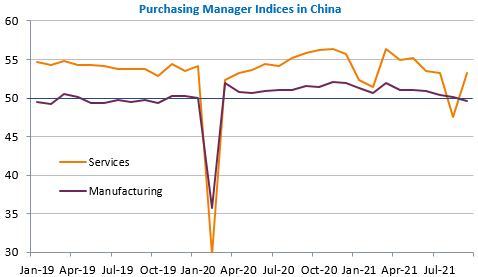Join EnergyScan
Get more analysis and data with our Premium subscription
Ask for a free trial here
The August PMIs confirmed the negative impact of the power cuts on China’s industrial activity in September, with the manufacturing PMI falling below 50 for the first time since the Covid-19 outbreak in February. The sharp rebound in the non-manufacturing index from 47.5 to 53.2, on the other hand, shows that the lifting of key restrictions to counter the resurgence of the outbreak in Nanjing province has translated into an immediate rebound in household spending, which should be seen in the retail sales figures. This leads to a slightly less pessimistic view on Q3 growth: the risk of a contraction seems to have been averted.

The Japanese data released overnight, on the other hand, shows a sharp decline in both industrial production (-3.2% mom) and retail sales (-4.1%) which makes a decline in Q3 GDP quite possible. UK Q2 GDP growth was revised sharply higher from +4.8% to +5.5% qoq, which may allow the pound to stabilise after a sharp decline in recent days (GBP/USD < 1.345).
Equity markets recovered yesterday as bond yields stopped rising, but the Nasdaq continued to fall. The dollar continued to rise to a 12-month high against all currencies, while the EUR/USD exchange rate fell below 1.16 for the first time since July 2020. The strengthening of inflation in Germany in September, probably at least 4%, could interrupt this movement. In the United States, the budget debates will be followed first: the debt ceiling issue is not settled but the threat of a shutdown of the administration as of tonight seems to be averted.
Get more analysis and data with our Premium subscription
Ask for a free trial here